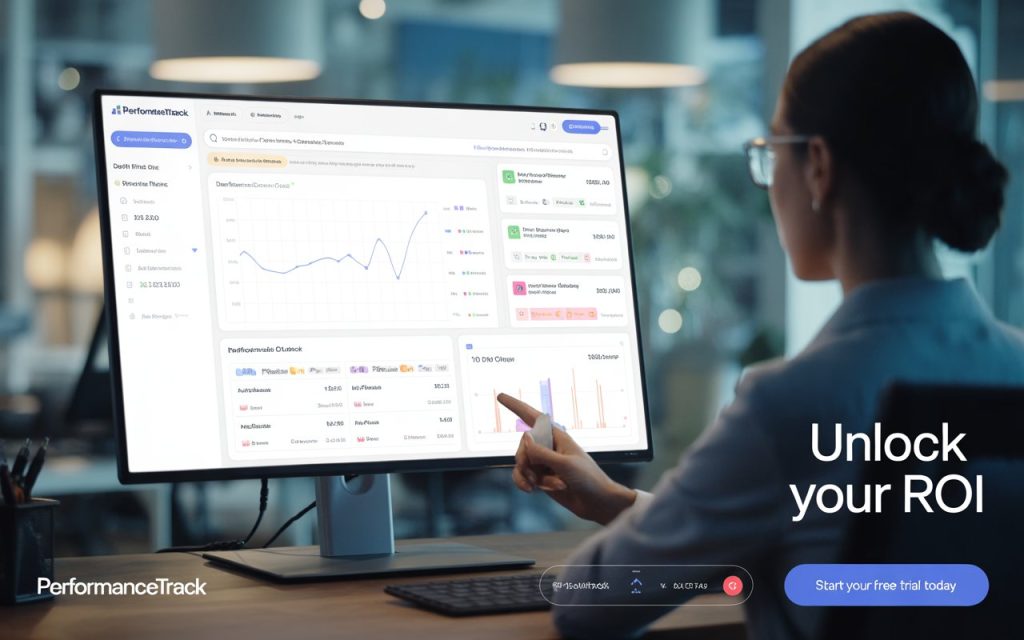Executing campaigns without tracking results tends to leave companies confused about what’s going right and what’s going wrong. Growth opportunities may be missed, conversions may be wrongly attributed, and money may be thrown at failed ads. The problem lies in obtaining a precise picture of campaign performance by different channels.
This is addressed by tracking software for performance marketing, which gives companies real data about clicks, conversions, and return on investment. Teams can know what is effective, cut wasteful expenses, and scale campaigns with informed choices using real-time analysis. The following guide explains why monitoring matters, what to look for in features, and how campaign performance might be improved using the right software.
Why Monitoring Campaigns Is Important
Running a campaign without tracking is like spending money without checking your balance. Businesses spend money on a variety of channels, including influencers, affiliates, and advertisements, but it can be challenging to determine which are profitable and which are a waste of funds without proper tracking. A performance marketing platform ensures that finances are used carefully, performance is tracked, and potential strategies are based on actual data.
What Is Tracking Software for Performance Marketing?
Performance marketing tracking software is a technology that lets businesses monitor the real-time performance of their marketing activities. It gathers information on clicks, conversions, ROI, and cost per acquisition. Marketers can use this software to compare the impact of various campaigns and make choices based on data. They receive exact figures that highlight the most successful platforms or partners, eliminating the need to guess.
Unlike manual tracking or basic analytics, performance marketing tracking software consolidates campaign data in one place. This eliminates guesswork and reduces the chances of human error. Additionally, it allows businesses to monitor both micro (specific affiliate or partner contribution) and macro (total ROI) performance. Flexibility is another advantage for expanding businesses. Performance marketing tracking software ensures uniformity, precision, and openness throughout all efforts, regardless of the number of campaigns being run.
Must-Have Features in Tracking Software for Performance Marketing
When choosing tracking software for performance marketing, some features make a major difference:
- Real-time Reporting: Helps businesses see campaign updates in real time.
- Multi-Channel Tracking: Includes influencers, affiliates, advertisements, and more.
- Fraud Detection: Finds fake leads or questionable clicks.
- Customizable Dashboards: Simple to use and personalized to specific teams.
- Options for Integration: Connects with other tools and performance marketing platforms.
- Attribution Models: Indicate which channel generated the majority of conversions.
- Automated Alerts: Instantly alerts groups to odd increases, decreases, or fraud threats.
- Granular Segmentation: Provides deeper insights by breaking down performance by audience, area, or device.
- Cross-Device Tracking: Monitors user activity on phones, tablets, and PCs to ensure proper crediting.
Key Benefits of Tracking Software for Performance Marketing
There are various advantages of utilizing tracking software for performance marketing:
- Better Budget Allocation: Funds can be moved from campaigns that aren’t doing well to ones that are.
- Increased ROI: Companies may concentrate on what generates outcomes.
- Transparent Reporting: Teams and interested parties have access to precise data.
- Quicker Decision-Making: Using real-time data eliminates guesswork.
- Improved Partner Management: Companies can see which networks or affiliates perform successfully.
- Scalability: Software can manage larger amounts of data without losing accuracy as campaigns expand.
- Improved Customer Insights: Through thorough tracking, businesses can gain a deeper understanding of consumer behavior.
- Reduced Manual Work: Marketing teams save time with automated reporting and integrations.
How to Monitor Campaigns with Tracking Software
Using tracking software for performance marketing to monitor campaigns is simple if you follow these steps:
- Set Clear Objectives: Specify what defines success, such as income, clicks, or conversions.
- Channel Integration: Link affiliate programs, ad networks, and other platforms.
- Track Important Metrics: Keep an eye on conversion rates, cost per click, and expenses associated with gaining new customers.
- Use Alerts: Set up alerts for unexpected performance increases or decreases.
- Review Data Frequently: Daily or weekly checks allow quick strategy adjustments.
- Optimize Campaigns: Make use of information to improve budget allocation, messaging, and targeting.
Common Mistakes to Avoid When Using Tracking Software?
While tracking software for performance marketing is effective, some common mistakes can reduce its success rate:
- Not Defining Goals: Without specific goals, data has little to no significance.
- Avoiding Integrations: Accuracy decreases when important performance marketing tools are not connected.
- Fraud Detection Ignored: Results in losses due to affiliate marketing fraud or fake traffic.
- Relying on One Metric: A campaign may have a high click rate but low conversions.
- Not Reviewing Reports Regularly: Delayed actions often result in wasted spend.
Bottom Line
Performance marketing tracking software is now required for campaign monitoring. It provides businesses with the knowledge they require to maintain productivity, enhance ROI, and manage budgets. Businesses can make wiser choices and develop stronger advertising approaches by concentrating on the right qualities, avoiding common mistakes, and routinely evaluating data.

